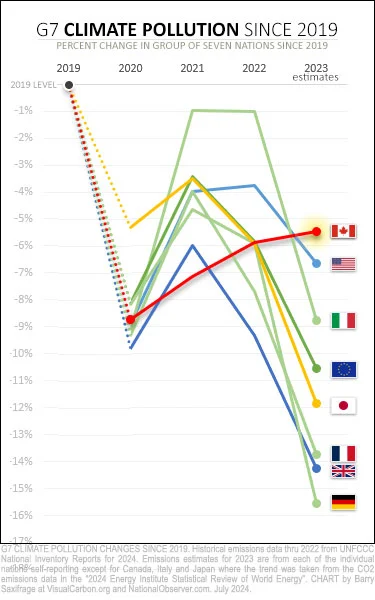Canadian emissions rose for the third straight year in 2023, according to the seventy-fourth edition of the venerable “Statistical Review of World Energy” report. The reason I’m turning to data in this report is because Canada won’t release its 2023 numbers until next year. This delay, which can exceed two years, keeps Canadians in the dark about where we are and where we are headed.
Many of Canada’s peers in the Group of Seven (G7) nations have already published their 2023 emission estimates — including the United States (U.S.), European Union (E.U.), France, Germany and the United Kingdom (U.K.).
So, to try to provide some current insight into where Canadians are now in the climate fight — and what it will take now to hit our 2030 climate target — I’ve gathered all these numbers and created a series of charts.
The dizzyingly steep path to Canada’s 2030 target
 .
.




Does this include emissions from tar sands oil or fossil gas when it’s burned abroad? Usually these numbers only include stuff burned in the country. But Canada’s a oil-exporting petrostate, so it would look way worse if the tar we dug up was all included, no matter who burns it.
Great question, unfortunately I don’t know and can’t take a look right now, but I believe the energy report cited and linked to is open access